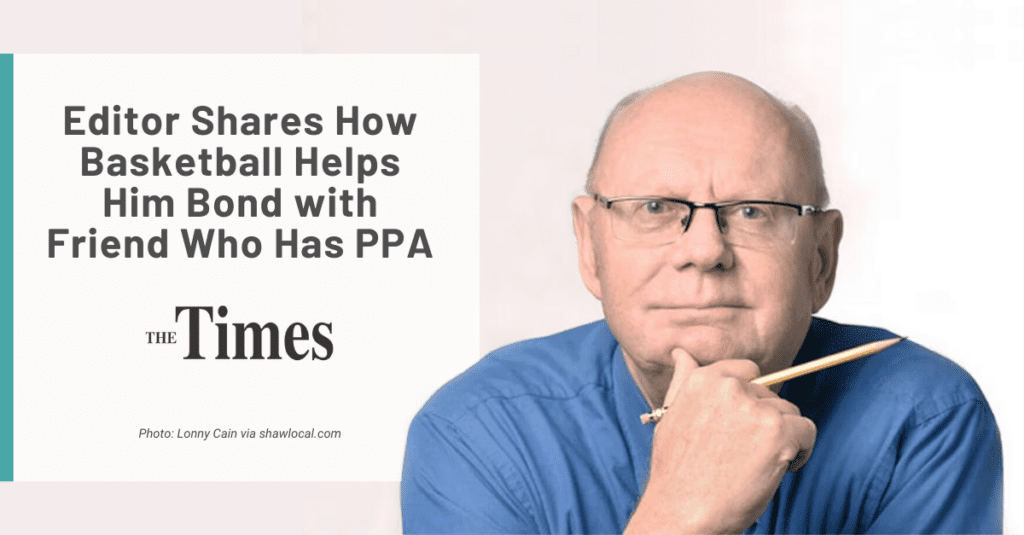Editor Shares How Basketball Helps Him Bond with Friend Who Has PPA

Retired managing editor Lonny Cain of The Times (Ottawa, Ill.) shared in a recent article how basketball helps him communicate and continue to bond with his lifelong friend Randy, who is living with primary progressive aphasia (PPA).
Cain notes that he can’t recall how the duo met, musing that Randy may have simply shown up at his door one day when they were teenagers, something he did frequently. When Randy visited, he often came with a basketball to ask if Cain wanted to “shoot some hoop.”
“Often I did not, but … it was not just about shooting hoops,” Cain writes. “He could do that alone. But it didn’t feel right for him to be alone. So, we played some H-O-R-S-E at his house.”
But Cain notes that playing HORSE isn’t possible anymore due to Randy’s difficulties with communication because of his diagnosis, including trouble putting sentences together and understanding what others say. As an FTD disorder, PPA begins in the brain’s speech and language centers and can cause difficulties with speaking, recalling the meanings of words, or finding the right words to say, among others. However, Randy’s communication difficulties wouldn’t get in the way of his and Cain’s friendship.
“He didn’t need words to shoot or pass to me as I moved to the hoop,” Cain wrote. “He used to coach basketball and was in his element.”
Cain focused on one day the duo spent together to illustrate how they communicated through basketball. The day began with playing basketball in a park by Randy’s home – Cain notes that while they struggled to make a basket, the duo still had a great time playing. Cain said that Randy would express frustration when missing but would join him in cheering when one of them would finally score.
“I had a great chat with Randy, but it was not the usual back-and-forth banter,” Cain says. “We connected with body language and lots of laughter. When shots went wide, we looked at each other and laughed. Loudly. Through his wide grin, I knew he was telling me people were watching and laughing at us.”
Later, the two toured their old neighborhood – Cain recalls that Randy recited the address aloud when passing his childhood home. Finding a new park nearby, the two also took the chance to play baseball and another round of basketball.
“It was a good day,” Cain writes. “His wife Ann told me it’s OK to do the same things over again. So, it’s likely we will do it again.”
Cain remarks that Ann has developed her own tools and methods for communicating with Randy. Despite the difficulties ahead, Ann stressed to Cain that Randy was “still sweet and happy, so mostly living a good life.”
“That’s the Randy I remember and still know – making jokes, laughing, huge smiles,” Cain said.
Cain closes the article by noting that he left the basketball behind at Randy’s house as a standing invitation to play again soon and bond without words.
While FTD can make communication, enjoying hobbies, or visiting favorite places difficult, there are many ways that persons diagnosed, care partners, and family members can connect, bond, and make new memories. Cape Cod Times columnist Saralee Perel shares how simply seeing her husband with FTD enjoy a delicious pastry can create a breathtaking, fulfilling moment in time.
By Category
Our Newsletters
Stay Informed
Sign up now and stay on top of the latest with our newsletter, event alerts, and more…
